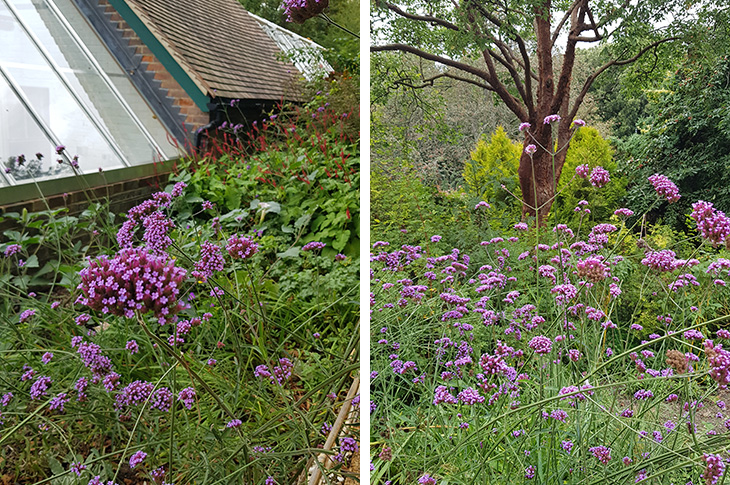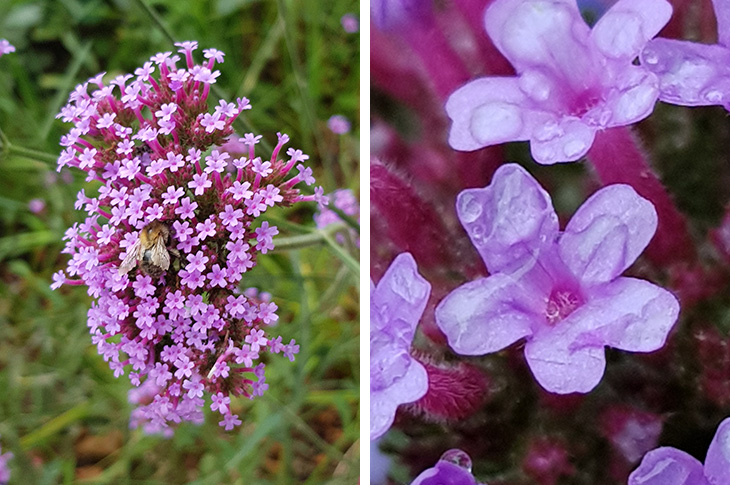Highdown is launching a new series of monthly blogs called ‘Plant Focus’, written by our fantastic volunteers. Each blog will explore a different plant at Highdown which currently has seasonal interest, so you can learn about the wonderful plants we have at our garden and come see them for yourself.
We are kicking off Plant Focus with a plant familiar to many: the Verbena, written by Highdown’s Engagement & Volunteering Assistant, Rebecca Jones.
Verbena: Verbena bonariensis
Season: June to October
Location at Highdown: next to glasshouse and Sensory Garden
I first saw this eye-catching, purple-flowered plant in gardens in Worthing when I moved there a few years ago. With its fragile looking stems I’m always amazed it doesn’t blow over in the blustery coastal wind and rain!
Verbena bonariensis, as seen at Highdown Gardens, has quite a few common names including vervain, tall verbena or purpletop verbena. This plant is just one of about 250 species in the genus Verbena, of which only about half a dozen are in cultivation. V. bonariensis is native to Argentina and Brazil, which makes sense when you realise that the species name is derived from ‘Buenos Aires’.
Photos: Verbena bonariensis – next to the glasshouse and in the Sensory Garden (credit Rebecca Jones)

They were first grown as a garden ornamental in 1726 by Englishmen James and William Sherard, who got the seeds from a dried specimen sent back to England from Buenos Aires. In the wild it is naturally perennial but is grown as an annual in cooler climates, such as ours. It is considered a weed in many mild climates, such as California, Texas, Australia, southern Africa, Fiji, and New Guinea, where it has naturalized.
The small purple flowers bloom in clusters on top of long, slender but sturdy stalks and can grow up to 6ft tall and 3ft wide. It’s very attractive to butterflies and moths and has a long flowering season so is good for nectar-feeding insects late in summer and into autumn. If you look at the flower heads you can see why the butterflies like it so much – the flowers are very similar to buddleia. Having multiple flowers on one flower-head enables insects to get lots of food without having to expend much energy to do so.
Photos: Verbena bonariensis – a bee in the flowers, and a close up of the flowers (credit Rebecca Jones)

It’s easy to grow and isn’t too fussy about soil type providing it is well drained and is usually cultivated from seed. It does have a tendency to self seed and can look great in informal prairie style borders. However, if you don’t want it to spread make sure you deadhead it immediately after flowering.
If, like me, you are interested in the etymology or meaning of plant names, you might like to know that Verbena is derived from Latin, meaning ‘sacred bough’. This refers to the leafy twigs of Verbena officinalis, Common verbena or vervain, that were historically carried by priests, used in wreaths for druidic rituals, and for medicine. Vervain comes from the Celtic name, ‘ferfain’.